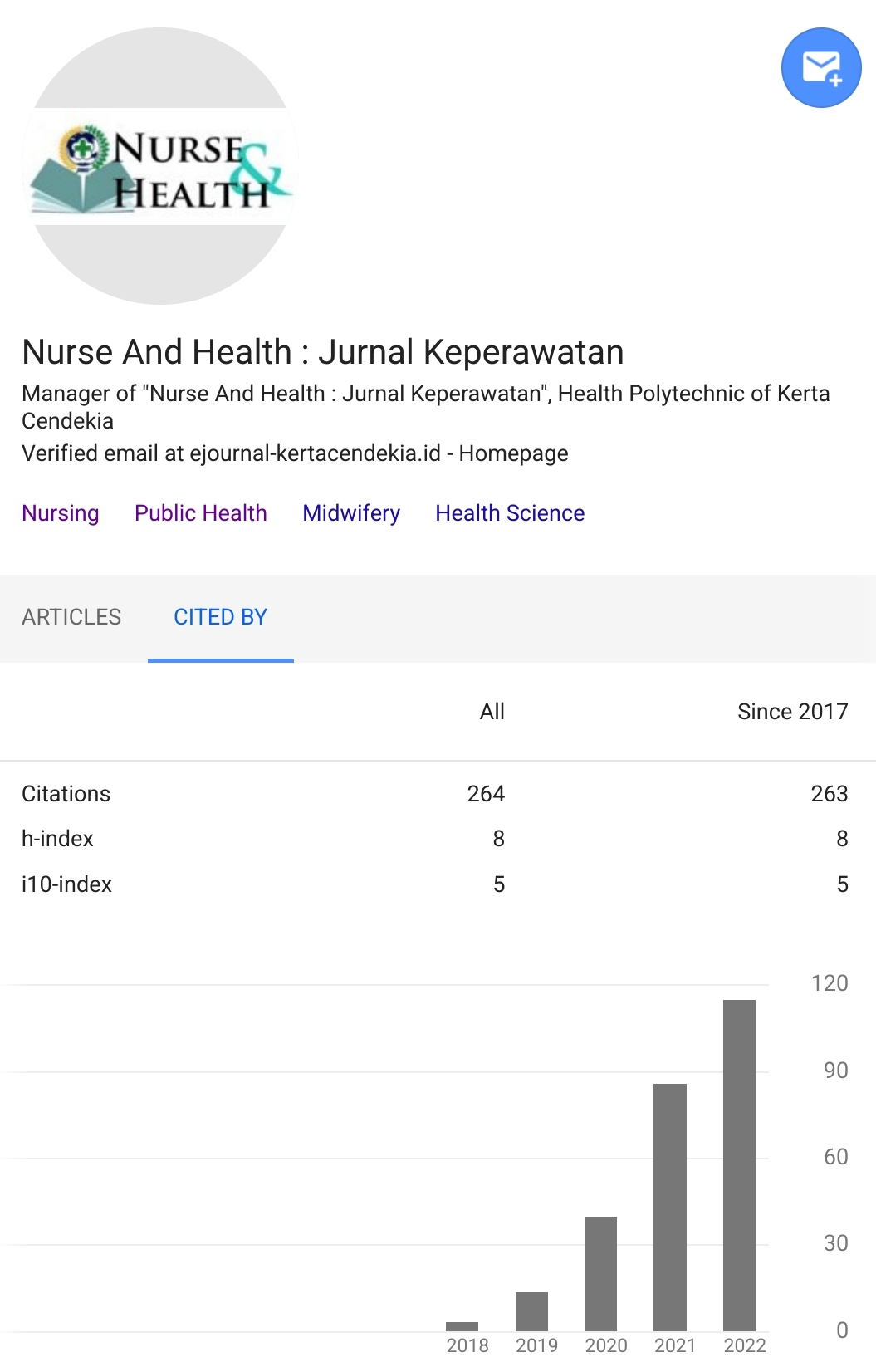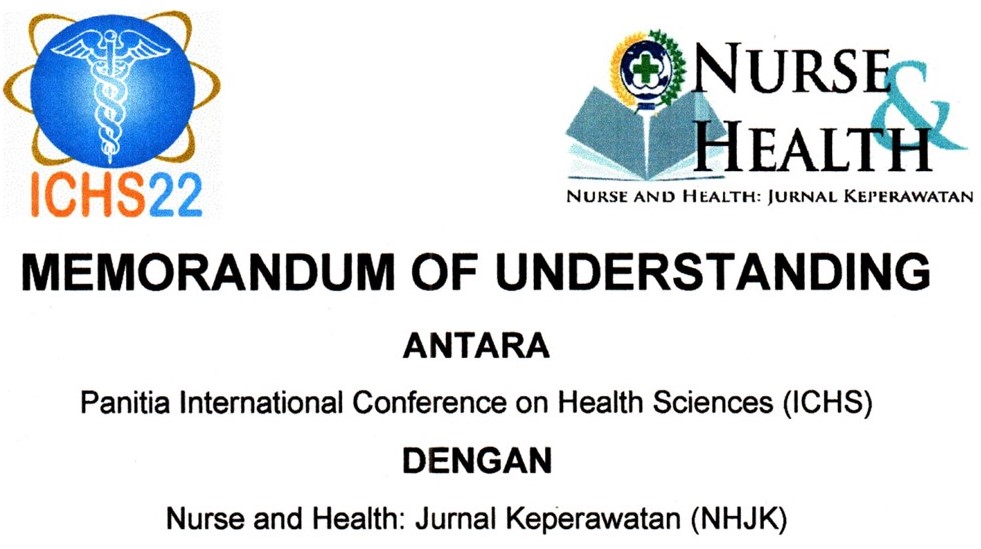RELATIONSHIP BETWEEN PREGNANT WOMEN'S HIGH-RISK AGE WITH THE PRETERM OF LABOR IN BIDAN PRAKTIK MANDIRI (BPM) BIDAN NANIK SUWATI, AMD. KEB, PUNGGING VILLAGE, MOJOSARI SUB-DISTRICT, MOJOKERTO DISTRICT
Abstract
Background. High-risk age for pregnant women is < 20 or > 35 years, the possibility of a bad pregnancy / complications will increase, such as preterm labor. Premature birth is the main cause in almost 2/3 of births. Preterm labor is a labor that occurs in pregnancy between 28 - 37 weeks. The incidence in BPM Bidan Nanik Suwati, Pungging Village, Mojosari Sub-District, which is from 80 women giving birth, found 7 respondents experienced preterm labor including 4 (57.14%) aged <20 and> 35 years and 3 (42.86%) aged 20 - 30 years.Objectives. The purpose of this study was to determine the correlation between pregnant women's high-risk age with the preterm of labor in Bidan Praktik Mandiri (BPM) Bidan Nanik Suwati, Amd. Keb, Pungging Village, Mojosari Sub-District, Mojokerto District.Methods. The research method used is analytic correlation with a case control approach using research instruments in the form of secondary data. The sample technique used in this study was total sampling, so the sample of the study was all pregnant women of high-risk age in BPM Nanik Suwati, Pungging Village, Mojosari Sub-District at 68 respondents. The results of data collection were processed by chi-square statistical test (X2) with a significance distance of α = 0.05.Results. From the results of the study, almost half (31%) of respondents experienced preterm labor and most (69%) of respondents experienced term delivery. Shows a significant relationship between the age of high-risk pregnant women with the incidence of preterm labor with a value of P = 0.036.Conclusion. The factors that influence preterm labor, such as parity, frequency of ANC patients, and obstetric complications. Therefore, it should be recommended for mothers as much as possible not to become pregnant at a high-risk age, namely age <20 and> 35 years. Keywords: High Risk Age, Pregnant Women, Preterm Labor Incidence.Downloads
References
Bobak, M. D., & Jensen, M. D. (2000). Perawatan Maternitas dan Ginekologi. Bandung: YIA-PKP.
Budiarto, E. (2002). Biostatistika Untuk Kedokteran dan Kesehatan Masyarakat. Jakarta: EGC.
Curtis, G. B. (2000). Kehamilan Di Atas Usia 30. Jakarta: EGC.
Davis, J. (2000). Kehamilan Dan Diabetes. Jakarta: Arcan.
Farrer, H. (1999). Perawatan Maternitas. Jakarta: EGC.
Friedman, E. A. (1998). Seri Skema Diagnosis dan Penatalaksanaan Obstetri. Jakarta: Binarupa Aksara.
Hidayat, Z. Z., Ajiz, E. A., & Krisnadi, S. R. (2016). Risk Factors Associated with Preterm Birth at Hasan Sadikin General Hospital in 2015. Open Journal of Obstetrics and Gynecology, 6(13), 798.
Manuaba, I. B. G 1. (1998). Memahami Kesehatan Reproduksi Wanita. Jakarta: Penerbit Arcan.
Manuaba, I. B. G 2. (1998). Ilmu Kebidanan, Penyakit Kandungan & Keluarga Berencana Untuk Pendidikan Bidan. Jakarta: EGC.
Neil-Rose, W. (2007). Panduan Lengkap Perawatan Kehamilan. Jakarta: Dian Rakyat.
Nolan, Mary. (2003). Kehamilan dan Melahirkan. Jakarta: Arcan.
Notoatmodjo, S. (2002). Metodologi Penelitian Kesehatan. Jakarta: Rineka Cipta.
Nursalam. (2003). Konsep & Penerapan Metodologi Penelitian Ilmu Keperawatan, Pedoman Skripsi, Tesis dan Instrumen Penelitian Keperawatan. Jakarta: Salemba Medika.
Oxorn, H. (2003). Patologi dan Fisiologi Persalinan (Human Labor and Birth). Jakarta: Yayasan Essentia Medica.
Rayburn, W. F., & Carey, J. C. (2001). Obstetri dan Ginekologi. Jakarta: Widya Medika.
Rustam, M. (1998). Sinopsis Obstetri Jilid I. Jakarta: EGC.
Saifuddin, A. B. (2002). Buku Panduan Praktis Pelayanan Kesehatan Maternal dan Neonatal. Jakarta: Yayasan Bina Pustaka Sarwono Prawirohardjo.
Soetjiningsih. (1998). Tumbuh Kembang Anak. Cetakan 2. Jakarta : EGC.
Wiknjosastro, Hanifa. (2005). Ilmu Kebidanan. Jakarta: Yayasan
Bina Pustaka Sarwono Prawihardjo.
Authors who publish with Nurse and Health: Jurnal Keperawatan agree to the following terms:
- Authors retain copyright licensed under a Creative Commons Attribution-NonCommercial 4.0 (CC BY-NC 4.0), which allows others to remix, tweak, and build upon the authors' work non-commercially, and although the others' new works must also acknowledge the authors and be non-commercial, they don't have to license their derivative works on the same terms.
- Authors are permitted and encouraged to post their work online (e.g., in institutional repositories or on their website) prior to and during the submission process, as it can lead to productive exchanges, as well as earlier and greater citation of published work (See The Effect of Open Access). Authors can archive pre-print and post-print or publisher's version/PDF.






















